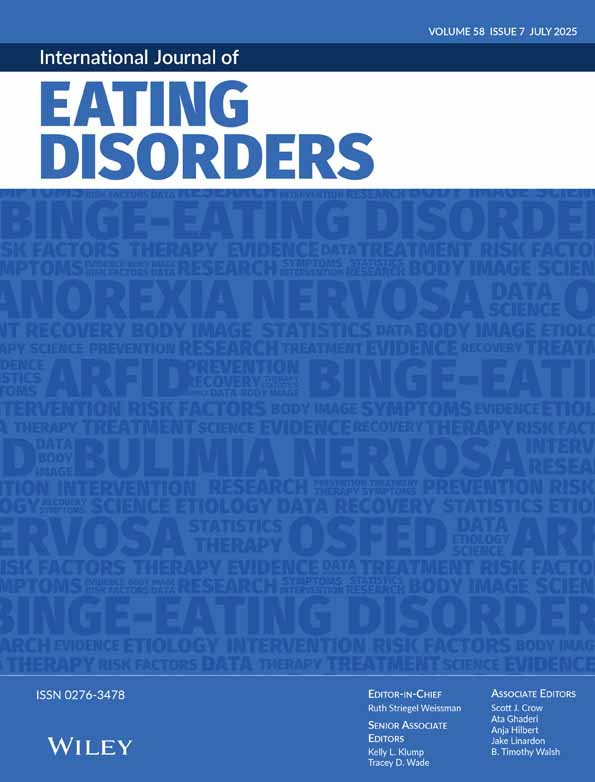Global self-esteem as contingent on body satisfaction among patients with bulimia nervosa: Lack of diagnostic specificity?
Abstract
Objective
To examine whether the self-esteem of patients with bulimia nervosa was more contingent on body satisfaction than that of nonpsychiatric control and of depressed participants. Method: Patients with bulimia nervosa (selected according to DSM-III-based structured clinical interviews), those with depression (selected based on chart diagnoses), and nonpsychiatric control samples completed measures of body dissatisfaction and of global self-esteem. Results: Consistent with past work, we found that body dissatisfaction accounted for a greater amount of global self-esteem among bulimia nervosa patients, as compared to nonpsychiatric control subjects. However, the relation between global self-esteem and body dissatisfaction was similar in patients with bulimia nervosa as in those with depression. Although our depressed group possessed bulimic characteristics, this did not appear to account for our findings, in that the correlation between body dissatisfaction and self-steem was highest among the nonbulimic depressed participants. Discussion: Our results raise questions about the specific pathognomonic quality of body satisfaction-dependent self-esteem in bulimia nervosa. © 1997 by John Wiley & Sons, Inc.




